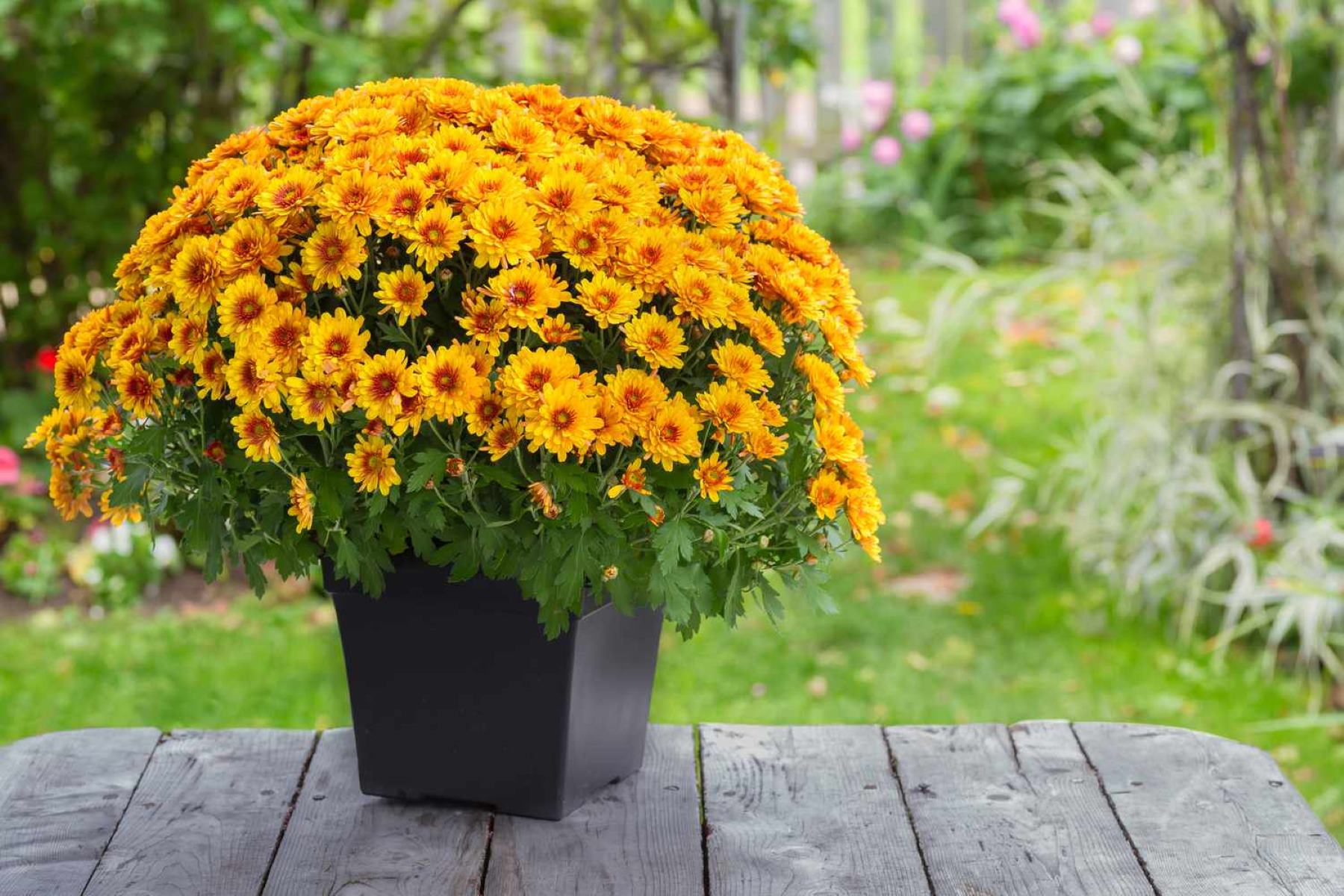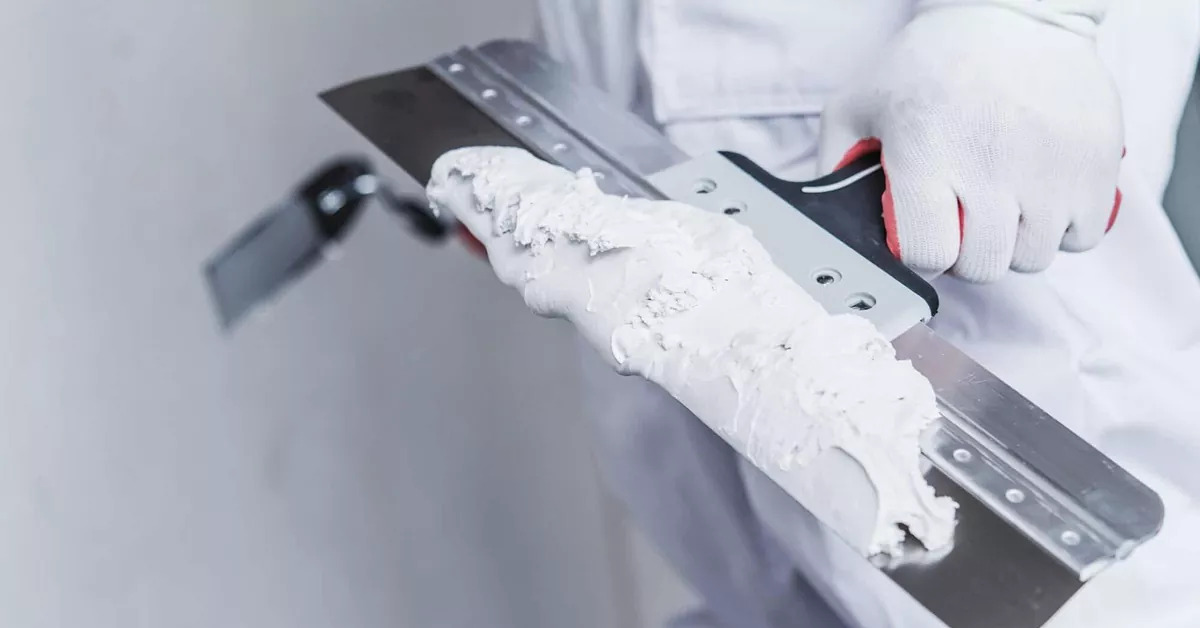Home>Gardening & Outdoor>Plant Care & Gardening Tips>Why Are My Mums Wilting


Plant Care & Gardening Tips
Why Are My Mums Wilting
Modified: February 18, 2024
Discover expert plant care and gardening tips to prevent your mums from wilting. Learn how to keep your mums healthy and vibrant with our helpful advice.
(Many of the links in this article redirect to a specific reviewed product. Your purchase of these products through affiliate links helps to generate commission for Storables.com, at no extra cost. Learn more)
Introduction
Mums, also known as chrysanthemums, are popular flowering plants cherished for their vibrant blooms and ability to thrive in various climates. These resilient perennials are a favorite among gardeners, adding a burst of color to gardens, porches, and indoor spaces. However, despite their hardy nature, mums can sometimes exhibit signs of distress, leaving gardeners puzzled and concerned. If you've ever found yourself asking, "Why are my mums wilting?" it's essential to explore the potential causes behind this issue.
Understanding the factors that contribute to wilting mums is crucial for their overall health and longevity. By delving into the common culprits behind wilting, such as overwatering, underwatering, lack of sunlight, pests and diseases, and soil issues, you can take proactive measures to address the problem and revive your beloved mums. Let's embark on a journey to uncover the root causes of wilting mums and equip ourselves with the knowledge needed to nurture these beautiful plants back to their full glory.
Key Takeaways:
- Don’t drown your mums! Overwatering can suffocate their roots, leading to wilting. Let the soil dry slightly between waterings to help them thrive.
- Mums need sunlight to flourish! Ensure they get at least 6 hours of direct sunlight per day to prevent wilting and promote vibrant blooms.
Read more: Why Are My Mums Losing Color
Overwatering
Overwatering is a common issue that can lead to the wilting of mums. While it's natural to want to ensure that your plants receive an ample water supply, excessive watering can have detrimental effects on their health. Mums, like many other plants, require a delicate balance of moisture to thrive. When this equilibrium is disrupted, the consequences can be evident in the form of wilting leaves and drooping stems.
One of the primary reasons overwatering leads to wilting is the suffocation of the plant's roots. When the soil is consistently waterlogged, the roots are deprived of essential oxygen, impeding their ability to function optimally. As a result, the plant's overall health deteriorates, and wilting becomes apparent.
Moreover, overwatering can disrupt the delicate nutrient uptake process. Excessive moisture in the soil can lead to nutrient leaching, where vital minerals are washed away before the plant can absorb them. This nutrient imbalance weakens the plant, causing it to wilt and exhibit signs of distress.
To identify whether overwatering is the culprit behind your mums' wilting, consider the soil's moisture level. If the soil feels excessively wet or water accumulates on the surface, it's likely that overwatering is the issue at hand. Additionally, observe the plant's leaves and stems for signs of yellowing or browning, which can indicate waterlogged roots and nutrient deficiencies.
Addressing overwatering involves adjusting your watering routine to allow the soil to dry out slightly between waterings. It's essential to strike a balance, ensuring that the soil remains moist but not waterlogged. Consider using well-draining soil and pots with drainage holes to facilitate proper water distribution and prevent water from accumulating around the roots.
By recognizing the signs of overwatering and taking proactive measures to adjust your watering practices, you can mitigate the effects of excessive moisture and help your mums recover from wilting. This simple adjustment can significantly improve the overall health and vitality of your plants, allowing them to thrive and adorn your garden with their resplendent blooms once more.
Underwatering
Underwatering is another common issue that can cause mums to wilt. While it may seem contradictory, insufficient watering can have detrimental effects on the health and appearance of these resilient plants. Mums, like many other flowering species, rely on a consistent and adequate water supply to support their growth and vitality. When they are deprived of this essential resource, they can exhibit visible signs of distress, including wilting leaves and drooping stems.
The consequences of underwatering are rooted in the plant's physiological response to water scarcity. When mums do not receive enough water, they enter a state of water stress, triggering a series of survival mechanisms that manifest as wilting. As the plant's water reserves become depleted, it prioritizes the allocation of remaining moisture to essential functions, such as sustaining the roots and vital organs. Consequently, the leaves and stems may wilt as a result of this adaptive response to conserve water.
To identify whether underwatering is the cause of your mums' wilting, it's crucial to assess the soil's moisture level and the plant's overall appearance. Dry, crumbly soil and visibly wilted leaves are indicative of insufficient water supply. Additionally, the plant's overall growth may appear stunted, and the leaves might lose their turgidity, appearing limp and lackluster.
Addressing underwatering involves establishing a consistent watering routine that meets the mums' moisture requirements. It's essential to strike a balance, ensuring that the soil remains adequately moist without becoming waterlogged. When watering, aim to hydrate the soil thoroughly, allowing the water to penetrate the root zone and replenish the plant's moisture reserves. Consider using a watering schedule that aligns with the mums' specific needs, taking into account factors such as climate, soil type, and pot size.
Incorporating mulch around the base of the plants can also help retain soil moisture and reduce water evaporation, providing a supportive environment for the mums to thrive. Additionally, regular monitoring of the plants' hydration levels and adjusting the watering frequency based on environmental conditions can help prevent future instances of underwatering and mitigate the risk of wilting.
By recognizing the signs of underwatering and implementing proactive measures to ensure adequate hydration, you can support the mums' recovery from wilting and promote their overall well-being. Through attentive care and a mindful approach to watering, you can rejuvenate your mums, allowing them to flourish and grace your garden with their vibrant blooms once more.
Lack of Sunlight
Lack of sunlight is a significant factor that can contribute to the wilting of mums. These resilient flowering plants rely on adequate sunlight to fuel the process of photosynthesis, which is essential for their growth and vitality. When mums are deprived of sufficient sunlight, their physiological functions are compromised, leading to visible signs of distress such as wilting leaves and diminished overall vigor.
The impact of insufficient sunlight on mums is rooted in their reliance on this natural energy source to produce food and sustain their metabolic processes. Sunlight provides the energy necessary for photosynthesis, a biochemical process through which plants convert light energy into chemical energy, enabling them to synthesize nutrients and support their growth. When mums are unable to access an adequate amount of sunlight, their ability to carry out photosynthesis is hindered, disrupting their energy production and nutrient assimilation.
To identify whether lack of sunlight is the cause of your mums' wilting, it's essential to assess their exposure to natural light. Mums typically thrive in full sunlight, requiring at least six hours of direct sunlight per day to support their optimal growth. If the plants are situated in shaded or partially shaded areas for an extended period, they may exhibit symptoms of light deprivation, including wilting leaves, elongated stems, and reduced flowering.
Addressing the issue of lack of sunlight involves strategically positioning the mums in areas that receive ample natural light. If the plants are potted, consider relocating them to sunnier spots or areas with better light exposure. For garden-planted mums, trimming back overhanging branches or foliage that obstructs sunlight can enhance their access to the essential light source.
In cases where natural light is limited, supplemental lighting options such as grow lights can be utilized to provide the mums with the necessary light intensity and duration. These artificial light sources can help compensate for inadequate sunlight and support the plants' photosynthetic activity, mitigating the risk of wilting and promoting their overall vigor.
By recognizing the significance of sunlight in the growth and well-being of mums, and taking proactive measures to ensure their access to adequate light, you can support the plants in overcoming the effects of light deprivation and rejuvenate them to their full splendor. Through thoughtful placement and consideration of their light requirements, you can empower your mums to thrive and adorn your garden with their resplendent blooms once more.
Pests and Diseases
Pests and diseases pose significant threats to the health and vitality of mums, often manifesting in the form of wilting leaves, stunted growth, and overall decline in plant vigor. These detrimental factors can compromise the mums' resilience and detract from their visual appeal, necessitating vigilant monitoring and proactive measures to mitigate their impact.
Read more: Why Are My Potted Mums Not Blooming
Pests
Pests such as aphids, spider mites, and caterpillars can inflict damage on mums, leading to wilting and deterioration of foliage. Aphids, tiny insects that feed on plant sap, can cause wilting by depriving the mums of essential nutrients and secreting a sticky substance known as honeydew, which promotes the growth of mold. Spider mites, microscopic arachnids, can also induce wilting by piercing the plant cells and extracting their contents, leading to discoloration and desiccation of leaves. Additionally, caterpillars can consume foliage, resulting in visible damage and wilting of the affected plant parts.
Diseases
Fungal diseases, such as powdery mildew and root rot, can contribute to the wilting of mums by compromising their physiological functions and impeding nutrient uptake. Powdery mildew, characterized by a white powdery growth on the leaves, can hinder photosynthesis and weaken the plant, leading to wilting and diminished vigor. Root rot, caused by excessive soil moisture and poor drainage, can damage the mums' root system, impeding their ability to absorb water and nutrients, ultimately resulting in wilting and decline.
Addressing pest infestations and diseases involves implementing integrated pest management strategies, including regular inspection of the mums for signs of pest activity and disease symptoms. Utilizing natural predators, such as ladybugs, to control aphid populations and employing horticultural oils to deter spider mites can help mitigate pest-related wilting. Additionally, practicing good sanitation, such as removing and disposing of affected plant parts, can prevent the spread of diseases and minimize their impact on the mums' health.
By recognizing the potential threats posed by pests and diseases and adopting proactive measures to address these challenges, you can safeguard the mums' well-being and mitigate the risk of wilting. Through attentive care and timely intervention, you can empower your mums to thrive and adorn your garden with their vibrant blooms once more.
Soil Issues
The composition and quality of the soil play a pivotal role in the overall health and vitality of mums. Soil issues, ranging from nutrient deficiencies to improper drainage, can significantly impact the plants' well-being, leading to visible signs of distress such as wilting and diminished vigor. By delving into the various soil-related challenges that mums may encounter, we can gain valuable insights into addressing these issues and fostering an optimal growing environment for these beloved flowering plants.
Nutrient Deficiencies
One of the primary soil-related issues that can contribute to the wilting of mums is nutrient deficiencies. Essential nutrients, including nitrogen, phosphorus, and potassium, are vital for the plants' growth, flowering, and overall resilience. When the soil lacks adequate levels of these nutrients, mums may exhibit symptoms such as yellowing leaves, stunted growth, and wilting. Addressing nutrient deficiencies involves supplementing the soil with balanced fertilizers tailored to the specific needs of mums, ensuring that they receive the essential nutrients required for their optimal development.
Read more: Why Are My White Mums Turning Purple
Soil Compaction
Soil compaction can impede the mums' root development and hinder their ability to access water and nutrients, leading to wilting and diminished vitality. Compacted soil restricts the movement of air and water, creating a challenging environment for the roots to thrive. Implementing measures to alleviate soil compaction, such as aerating the soil and incorporating organic matter to improve its structure, can enhance the mums' root penetration and alleviate the effects of soil compaction, promoting their overall health and vigor.
Drainage Issues
Poor soil drainage can exacerbate the risk of wilting in mums, as waterlogged soil can suffocate the roots and impede their functionality. Inadequate drainage can lead to water accumulation around the roots, causing them to rot and compromising the plants' ability to absorb water and nutrients. Addressing drainage issues involves enhancing the soil's permeability by incorporating organic amendments and creating raised beds or mounds to facilitate proper water drainage. By optimizing the soil's drainage capabilities, you can mitigate the risk of wilting and create a conducive growing environment for your mums.
pH Imbalance
The pH level of the soil significantly influences the mums' nutrient uptake and overall well-being. An imbalance in soil pH can hinder the plants' ability to access essential nutrients, leading to wilting and nutrient deficiencies. Conducting soil tests and adjusting the pH levels through the application of suitable amendments can help create an optimal pH environment for the mums, supporting their growth and resilience.
By addressing soil issues and implementing proactive measures to optimize the soil's composition and quality, you can empower your mums to overcome the challenges associated with wilting and thrive in a nurturing environment. Through thoughtful soil management and attentive care, you can rejuvenate your mums, allowing them to grace your garden with their resplendent blooms once more.
Conclusion
In conclusion, the wilting of mums can stem from a variety of factors, each of which warrants careful consideration and proactive measures to address. Whether it's the result of overwatering, underwatering, lack of sunlight, pest and disease infestations, or soil-related issues, the wilting of mums serves as a visible indicator of their distress and the need for intervention. By recognizing the nuanced challenges that mums may face and understanding the underlying causes of wilting, gardeners can equip themselves with the knowledge and strategies needed to support the plants' recovery and overall well-being.
Addressing the issue of wilting mums involves a multifaceted approach that encompasses attentive care, strategic adjustments to environmental conditions, and proactive management of potential stressors. By monitoring the plants' hydration levels, ensuring adequate sunlight exposure, implementing integrated pest management practices, and optimizing the soil's composition and drainage, gardeners can create an optimal growing environment for mums to thrive.
Furthermore, fostering a deep understanding of the interconnected factors that contribute to the wilting of mums empowers gardeners to cultivate a harmonious and supportive relationship with these resilient flowering plants. By embracing the role of stewards of nature, individuals can nurture their mums back to health, allowing them to flourish and adorn gardens, porches, and indoor spaces with their vibrant blooms once more.
Ultimately, the journey to revive wilting mums is a testament to the transformative power of attentive care, knowledge, and a deep appreciation for the resilience and beauty of these beloved flowering plants. Through thoughtful observation, proactive intervention, and a nurturing touch, gardeners can embark on a rewarding endeavor to rejuvenate their mums, celebrating the triumphant return of their resplendent blooms and the enduring vitality of nature's creations.
Frequently Asked Questions about Why Are My Mums Wilting
Was this page helpful?
At Storables.com, we guarantee accurate and reliable information. Our content, validated by Expert Board Contributors, is crafted following stringent Editorial Policies. We're committed to providing you with well-researched, expert-backed insights for all your informational needs.














0 thoughts on “Why Are My Mums Wilting”